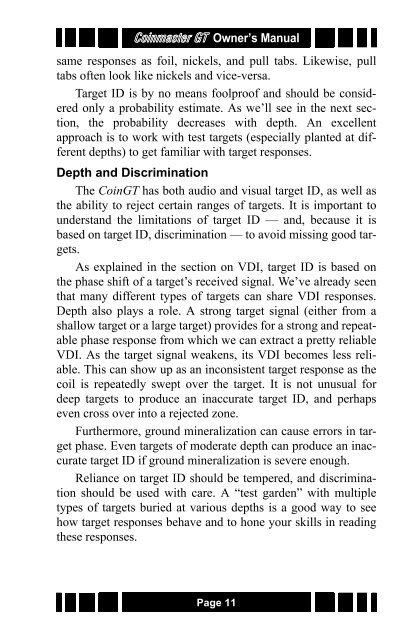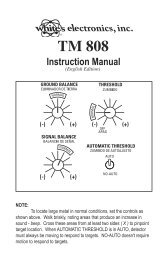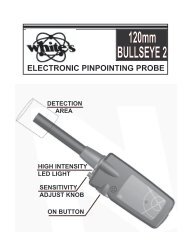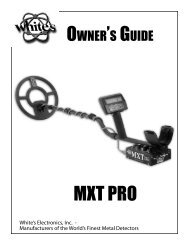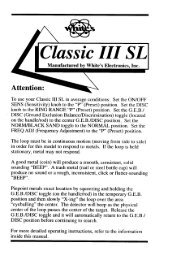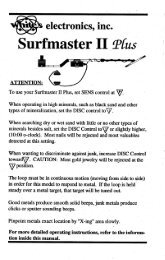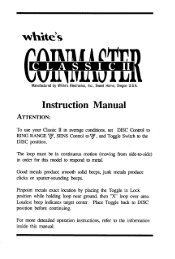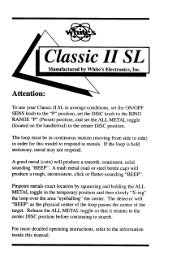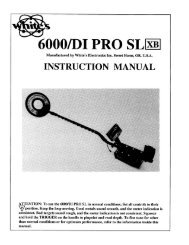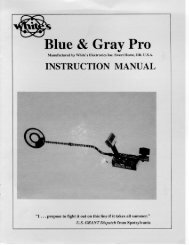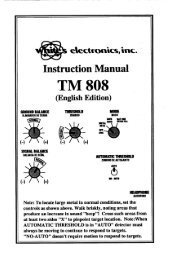Coinmaster GT Instruction Manual.pdf - White's Metal Detectors
Coinmaster GT Instruction Manual.pdf - White's Metal Detectors
Coinmaster GT Instruction Manual.pdf - White's Metal Detectors
You also want an ePaper? Increase the reach of your titles
YUMPU automatically turns print PDFs into web optimized ePapers that Google loves.
<strong>Coinmaster</strong> <strong>GT</strong> Owner’s <strong>Manual</strong><br />
same responses as foil, nickels, and pull tabs. Likewise, pull<br />
tabs often look like nickels and vice-versa.<br />
Target ID is by no means foolproof and should be considered<br />
only a probability estimate. As we’ll see in the next section,<br />
the probability decreases with depth. An excellent<br />
approach is to work with test targets (especially planted at different<br />
depths) to get familiar with target responses.<br />
Depth and Discrimination<br />
The Coin<strong>GT</strong> has both audio and visual target ID, as well as<br />
the ability to reject certain ranges of targets. It is important to<br />
understand the limitations of target ID — and, because it is<br />
based on target ID, discrimination — to avoid missing good targets.<br />
As explained in the section on VDI, target ID is based on<br />
the phase shift of a target’s received signal. We’ve already seen<br />
that many different types of targets can share VDI responses.<br />
Depth also plays a role. A strong target signal (either from a<br />
shallow target or a large target) provides for a strong and repeatable<br />
phase response from which we can extract a pretty reliable<br />
VDI. As the target signal weakens, its VDI becomes less reliable.<br />
This can show up as an inconsistent target response as the<br />
coil is repeatedly swept over the target. It is not unusual for<br />
deep targets to produce an inaccurate target ID, and perhaps<br />
even cross over into a rejected zone.<br />
Furthermore, ground mineralization can cause errors in target<br />
phase. Even targets of moderate depth can produce an inaccurate<br />
target ID if ground mineralization is severe enough.<br />
Reliance on target ID should be tempered, and discrimination<br />
should be used with care. A “test garden” with multiple<br />
types of targets buried at various depths is a good way to see<br />
how target responses behave and to hone your skills in reading<br />
these responses.<br />
Page 11


